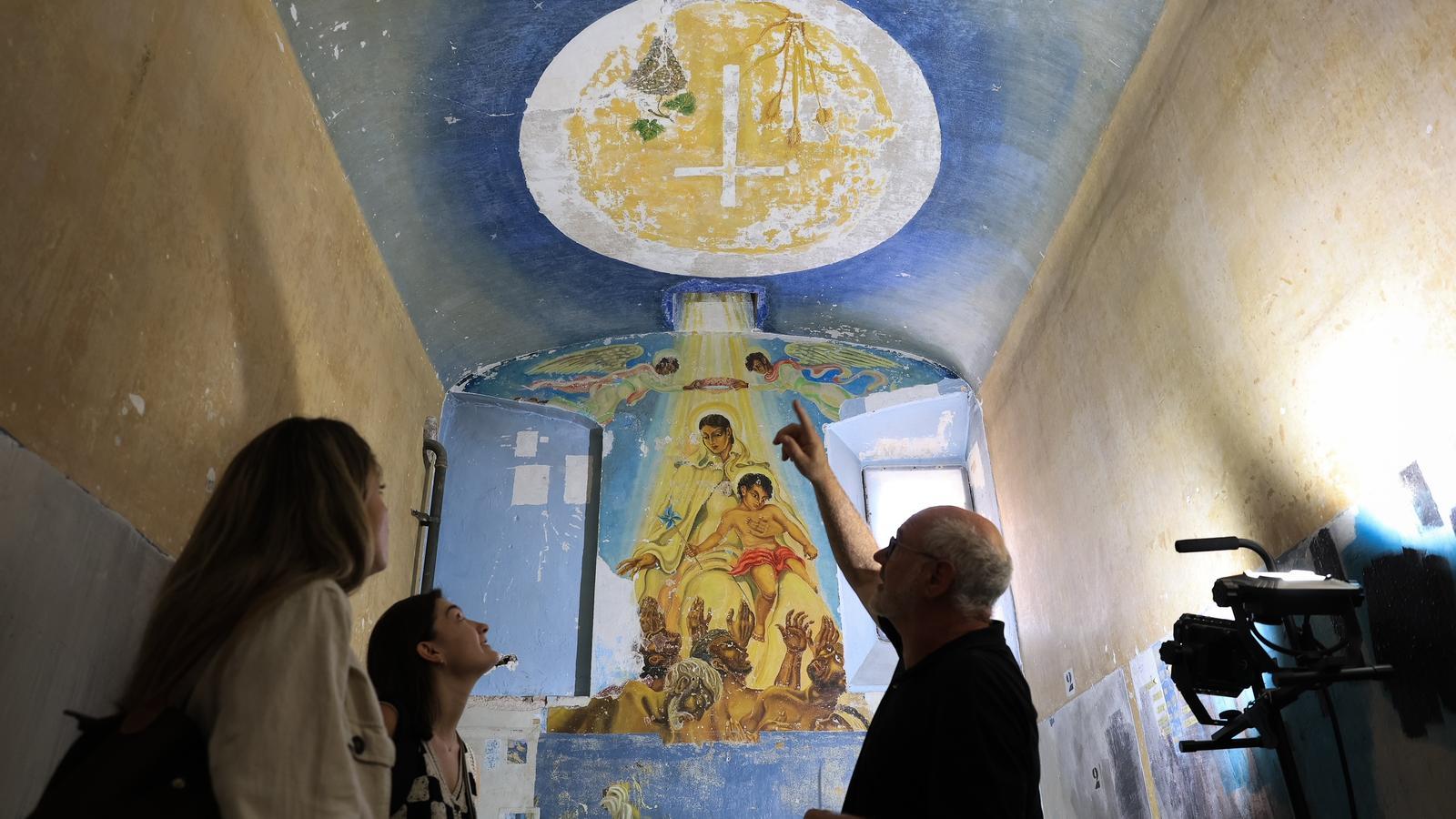Helios Gómez's Gypsy Virgin returns to the light almost 30 years later
The Department of Culture will declare the Gypsy Chapel of La Modelo a Cultural Asset of National Interest.


BarcelonaGabriel Gómez's fight to recover the Gypsy Chapel that her father painted in Modelo prison in 1950 has borne fruit: almost thirty years after Minister Núria de Gispert and the prison director made the controversial decision to cover it with white paint for hygiene reasons, this Thursday the Minister of Culture, Sònia Hernández Almodóvar, and the mayor of the murals. "The chapel is a heritage treasure that had been hidden for too long, and some people especially wanted it to remain hidden forever. And we have done the opposite: we have made a silenced memory visible," said Collboni, while the Minister announced that it will be declared a Cultural Asset of National Interest (BCIN).
"It's an inexplicable emotion," said Gabriel Gómez: "It comes into play. Beyond the family and personal issues, the chapel also speaks of social struggles, rehabilitations, and the clashes between a feudal mentality and a more liberal one." When his father painted the chapel, Gabriel Gómez was only 5 years old. He was allowed to visit him on the Feast of Our Lady of Mercy, which honors the Virgin Mary because she is the patron saint of prisoners. During the harshest years of Franco's regime, people at home went hungry, and Gómez hoped that during these visits he could curb his appetite. But that wasn't the case. "My father never let me try the prison stew," he explains.
The Gypsy Chapel is the name given to cell number 1 on the first floor of the fourth gallery, in the former corridor for prisoners condemned to death, which served as an oratory. The paintings were discovered by technicians from the Catalan Center for the Restoration of Movable Property. Work on the second phase began about six months ago and was a technical and scientific challenge that required the use of nanotechnology and research into ice cleaning, because the superimposed layers were hard, rigid, and very adherent.
The Virgin Mary and Child on the back wall and the musician angels on the inside of the entrance wall have come to light. A previously undocumented part of the complex has also been discovered in the vault: a chrismon on the ceiling with the Eucharistic symbols and a cross surrounded by a starry sky. Interestingly, technicians have been able to verify that Gómez made the stars with the silver foil from the chocolate bars his family sent him in prison.
The technicians will return to work between September and October to continue uncovering the group of supplicating prisoners at the feet of the Virgin Mary and the ochre and green sideboards throughout the room. Once the uncovering work is complete, the restoration is planned for 2026.
